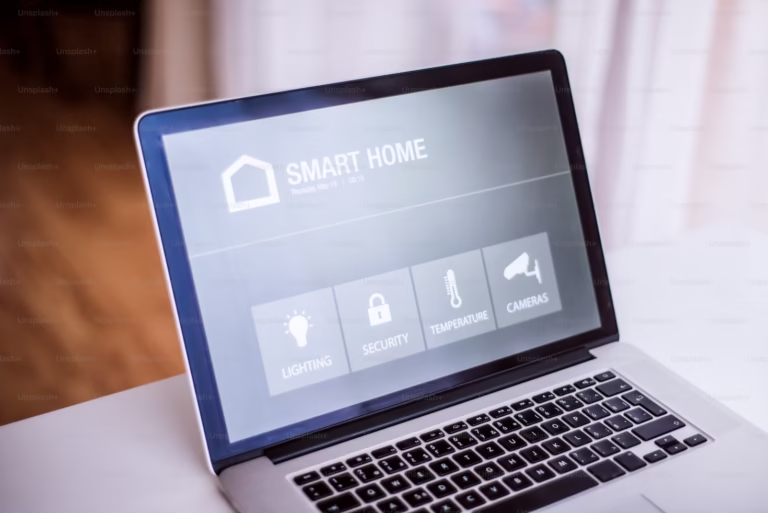The evolution of air conditioning has moved far beyond just cooling a room. With increasing demands for energy efficiency, convenience, and intelligent performance, Smart and Inverter AC technologies are now setting new standards in the HVAC (Heating, Ventilation, and Air Conditioning) industry.
In this guide, we’ll break down how these technologies work, their benefits, and why you should consider them for your next air conditioner purchase.
1. What is Inverter AC Technology?
Inverter technology in air conditioners refers to the way the compressor (the heart of the AC) operates. Traditional (non-inverter) ACs turn the compressor ON and OFF repeatedly to maintain the room temperature. This creates power spikes and reduces efficiency.
Inverter ACs, on the other hand, vary the compressor speed continuously based on the cooling requirement. Instead of switching off, the compressor slows down or speeds up to maintain the desired temperature.
1.1 How It Works
- The inverter controls the frequency of electricity supplied to the compressor.
- As the room gets closer to the set temperature, the inverter reduces the compressor speed.
- Once the desired temperature is reached, it maintains a steady low speed rather than shutting off completely.
2. Benefits of Inverter Technology
✅ Energy Efficiency
- Uses up to 30–50% less electricity than non-inverter models.
- Ideal for long usage hours.
✅ Consistent Cooling
- Maintains a stable room temperature without frequent fluctuations.
- More comfortable, especially for sleeping or working.
✅ Quieter Operation
- Since the compressor runs at a lower speed, it produces less noise.
- Suitable for bedrooms and study rooms.
✅ Longer Lifespan
- Less wear and tear due to the absence of frequent ON/OFF cycles.
- Inverter ACs generally last longer with fewer mechanical issues.
✅ Environmentally Friendly
- Uses newer refrigerants like R32 or R410A, which are better for the environment compared to older gases like R22.
3. What is Smart AC Technology?
Smart ACs are air conditioners equipped with connectivity features that allow users to control, monitor, and automate the AC remotely using smartphones, voice assistants, or home automation systems.
3.1 Features of Smart ACs
📱 Mobile App Control
- Turn your AC on/off, set temperature, fan speed, or schedule operation from anywhere via mobile apps.
🗣️ Voice Assistant Integration
- Works with Google Assistant, Amazon Alexa, or Apple Siri to control the AC with voice commands.
🕒 Smart Scheduling
- Set timers or weekly schedules to run your AC only when needed.
🌡️ Geo-Fencing
- Automatically turns off when you leave home and turns on when you’re approaching — using GPS tracking.
🔋 Energy Monitoring
- Track energy usage in real-time, get suggestions to save electricity.
🧠 AI-Based Cooling
- Some Smart ACs use artificial intelligence to learn your usage patterns and adjust cooling for optimal comfort and efficiency.
4. Benefits of Smart ACs
✅ Convenience
- Remote access means you can cool your room before you arrive home.
✅ Energy Saving
- Automation and tracking features help reduce unnecessary energy use.
✅ Customization
- Control every aspect of your cooling preferences — from airflow direction to humidity control.
✅ Integration
- Easily syncs with smart home systems, thermostats, and sensors.
5. Inverter vs. Non-Inverter AC: Key Differences
| Feature | Inverter AC | Non-Inverter AC |
|---|---|---|
| Compressor Speed | Variable (adjusts as needed) | Fixed (ON/OFF cycles) |
| Energy Efficiency | High | Moderate |
| Noise Level | Low | High (compressor noise) |
| Cost | Higher upfront cost | Lower upfront cost |
| Temperature Stability | Very stable | Fluctuates more |
| Best For | Long usage hours, daily use | Occasional or short-term use |
6. Smart + Inverter ACs: The Best of Both Worlds
Many modern air conditioners now combine smart and inverter technologies, offering both energy efficiency and intelligent control. This hybrid approach delivers superior comfort, flexibility, and savings.
🔧 Examples of Smart Inverter ACs
- LG Dual Inverter AC with ThinQ App
- Daikin FTKM Series with Wi-Fi Module
- Panasonic Miraie Smart AC
- Samsung WindFree Inverter AC with SmartThings
These units offer app control, energy analytics, and compatibility with voice assistants, all while maintaining low power consumption thanks to the inverter compressor.
7. Considerations Before Buying a Smart or Inverter AC
🏠 Room Size
- 1 Ton: Up to 120 sq. ft.
- 1.5 Ton: 120–180 sq. ft.
- 2 Ton: Above 180 sq. ft.
Choose the right capacity to avoid overloading or underperformance.
⚡ Power Supply
- Ensure your home has proper voltage stability; consider using a stabilizer if needed.
🌍 Wi-Fi Stability
- Smart features require a stable Wi-Fi connection to function effectively.
💵 Budget
- Smart Inverter ACs are more expensive initially but save money in the long run through lower energy bills.
8. Future Trends in AC Technology
- Self-diagnosis and Predictive Maintenance
Alerts you when components need servicing or when a malfunction is likely. - IoT Integration
Deeper integration with entire smart home ecosystems. - Solar-Powered Inverter ACs
Some brands are experimenting with models that work directly off solar energy. - Eco Mode AI
Uses sensors to detect human presence and adjust cooling accordingly.
9. Conclusion
Investing in a Smart Inverter AC is no longer a luxury — it’s a smart choice for modern living. These units combine energy efficiency, advanced control, and long-term durability, making them a sustainable and convenient option for homes and offices.
If you’re planning to buy a new AC in 2025, prioritize these technologies for better comfort, smarter control, and lower electricity bills. It may cost a bit more upfront, but the benefits pay off quickly.

